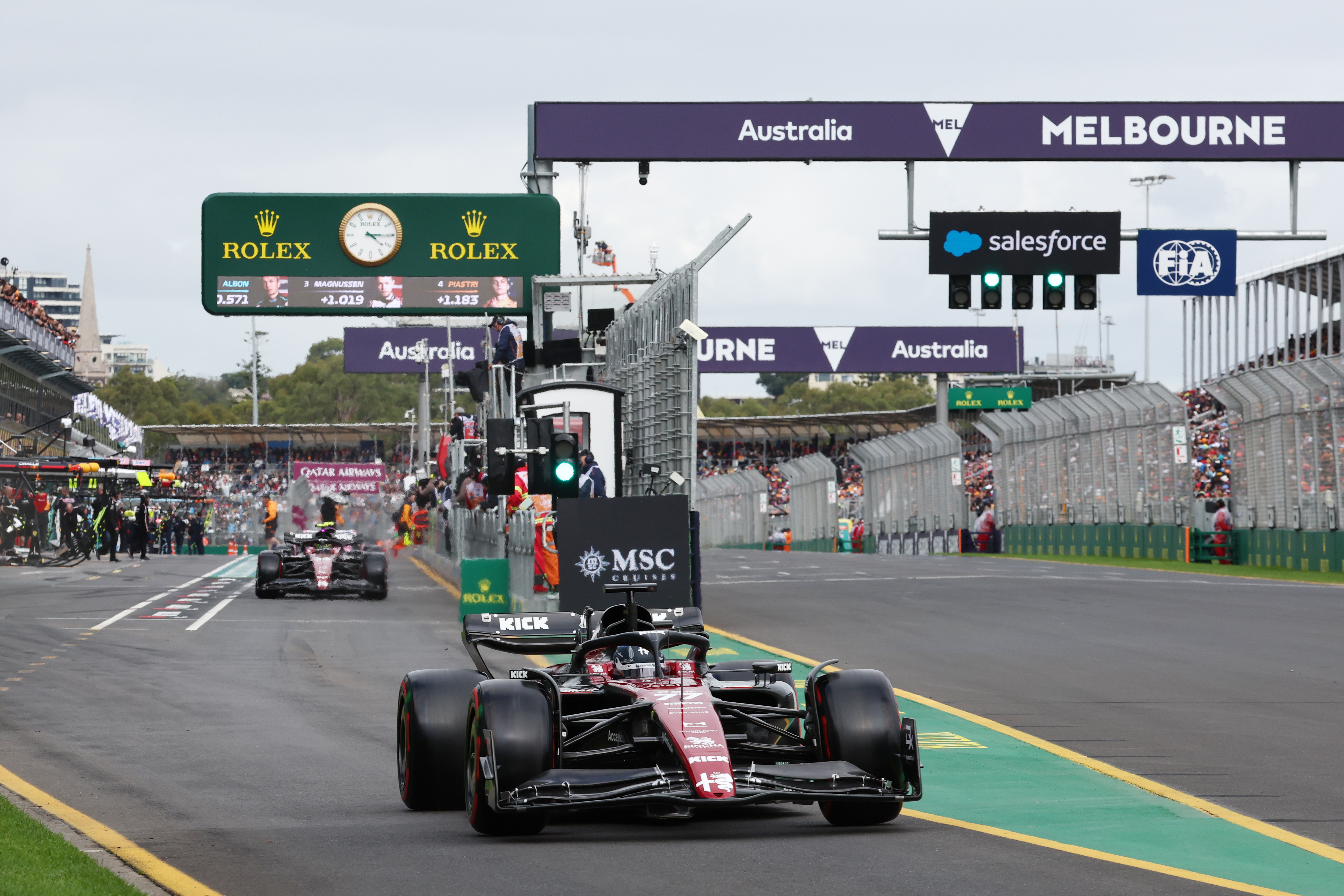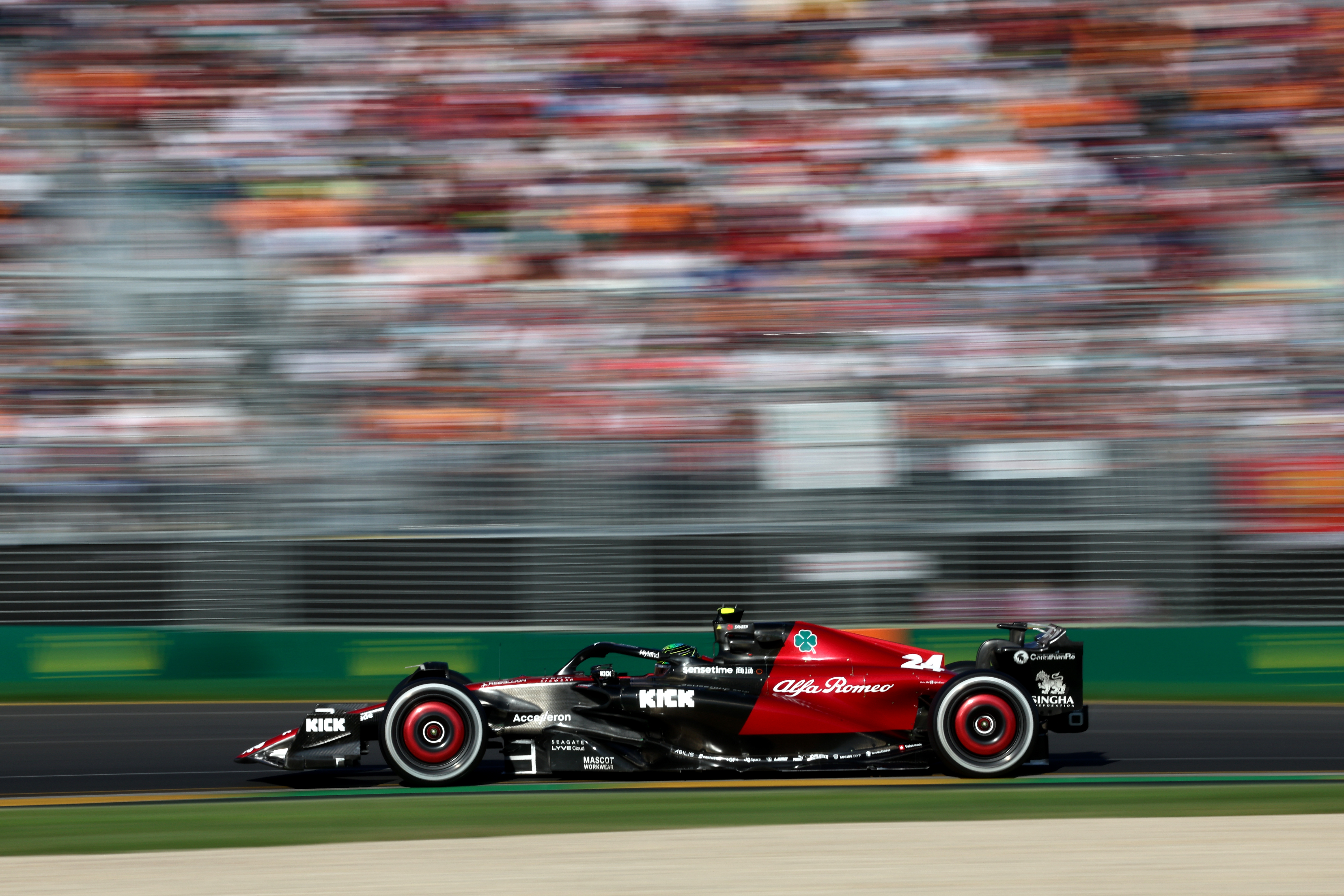In the early stages of last season, Alfa Romeo was flying high with a place in the top five of the constructors’ championship for the first third of the Formula 1 season and points finishes in seven out of nine races. But while 2023 has produced points in two out of three events for Alfa Romeo, it has on average the second-slowest car and has yet to reach Q3.
The season started promisingly with Valtteri Bottas finishing eighth in Bahrain thanks to an incisive first lap – an area he was determined to improve this year – and then a well-managed final stint on hard rubber. Team-mate Zhou Guanyu finished ninth in Australia, but that was assisted by the Alpine wipeout at the final standing restart and Carlos Sainz’s five-second penalty.
The new regulations appeared to have given Alfa Romeo the chance of a ‘reset’ after struggling since the start of the V6 turbo hybrid era. In particular, technical director Jan Monchaux felt that financial struggles in the build up to the new chassis regulations in 2017 and resulting performance disadvantage were something the team was “paying the price for” until the end of 2021.
With Audi in the process of taking over the team ahead of it becoming its official works operation in 2026, hopes are higher than ever for Sauber, which will cease to be called Alfa Romeo at the end of this year. But progress has been mixed in 2023.
The Alfa Romeo C43 was based around what Monchaux dubbed “brave” developments. The changes were focused on the sidepods and rear of the car to unlock more performance potential, with updates to the front end promised for early in the season.
The first major upgrade appeared in Australia, where the Alfa Romeo ran a modified nose design the team said was primarily designed to improve the balance.
The Alfa Romeo drivers both made Q2 in Bahrain and Saudi Arabia, although they were eliminated in Q1 in Australia with Bottas, in particular, baffled to be slowest of the 19 drivers who set a time. But head of trackside engineering Xevi Pujolar argued this reflected the team underachieving rather than fundamentally lacking pace.
“In terms of the update, everything’s working as expected,” he said on Sunday in Australia. “We thought that that front wing will bring a bit better car balance overall on the grip-limited [areas, ie the corners], better performance and if we look at where we were in FP3, we thought that we will fight for the Q3 with both cars.

“But then that light rain came before qualifying. We were very close to Q3, but everything is very tight and it was a bit more difficult to put a clean lap together in Q1. Then, with a bit of traffic and we ended up [with a] result that looks worse than what actually it is.”
The rain Pujolar referenced made the track even less grippy on a weekend when most teams struggled to warm the front tyres. That put front-end grip at a premium and perhaps explains why Bottas complained about understeer, as although changes were made to the set-up, breaking parc ferme, these were not made in response to a specific problem beyond the fact the pace was lacking in Q1.
However, the Alfa Romeo also performed questionably on the straights, seemingly carrying too much drag for the level of downforce vs its corner performance. The drivers have also previously complained about the car being a little slow on the straights.
“Maybe some teams in qualifying with the DRS open can extract a bit more performance in the power-limited [ie straights],” said Pujolar. “But otherwise, it is just the overall downforce that we need to improve.”
Pujolar argued that there’s no particular weakness in the car, hence the desire to improve performance by adding downforce. He also highlighted how tight it was in the midfield and he’s right to say that it would only have required a small uptick in performance to have been a Q3 threat. That at least gives hope that Alfa Romeo can still fight for a repeat of last year’s sixth in the constructors’ championship.
“Across the midfield you can see people strong more or less in different areas, in grip-limited, in power-limited,” said Pujolar, when asked about the potential drag weakness.

“Some they are a bit better, some they are similar to us. So I will not say that it’s an issue, it’s about the different ways cars are operating.”
With only three weekends of data, it’s difficult to be conclusive about Alfa Romeo’s natural position in the order. Most likely, it appears to be in a battle for seventh/eighth best with Haas and Williams, despite its encouraging form at tracks that perhaps favour it, and AlphaTauri looking weaker. Even McLaren has shown signs of having an edge, although that will need to be confirmed when its major floor upgrade package is introduced in Baku.
Alfa Romeo’s start to the season has been disappointing, but not overwhelmingly so. The team still has a long way to go to build up to being able to threaten the leading teams, so being a handy midfield competitor is an acceptable level for the team.
There are still upgrades in the pipeline that will be needed to ensure it consolidates its position as a Q2 regular that can pose a Q3 threat, rather than the Q1 faller it was in Australia. These will likely include changes to the floor, and perhaps even adjustments to make the DRS effect more powerful given Pujolar isolated that as a weakness.
The risk is that in a tightly-condensed pack, while it can gain a few tenths and be a Q3 threat, losing out in the other direction could make it a backmarker.




